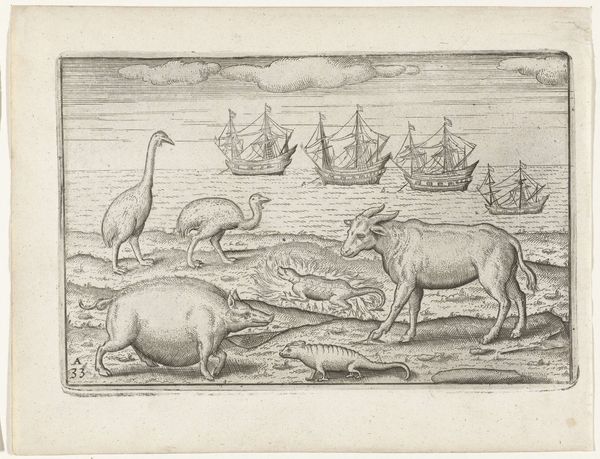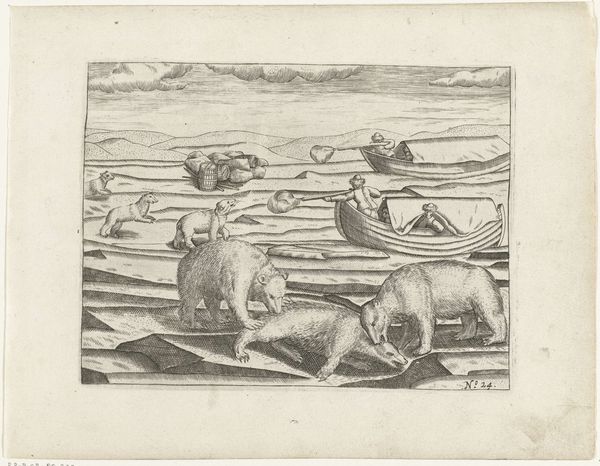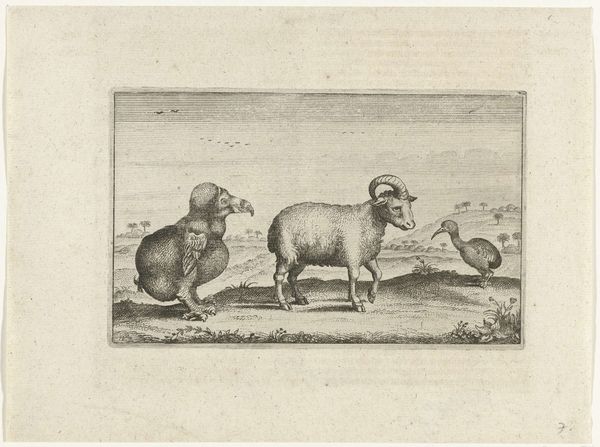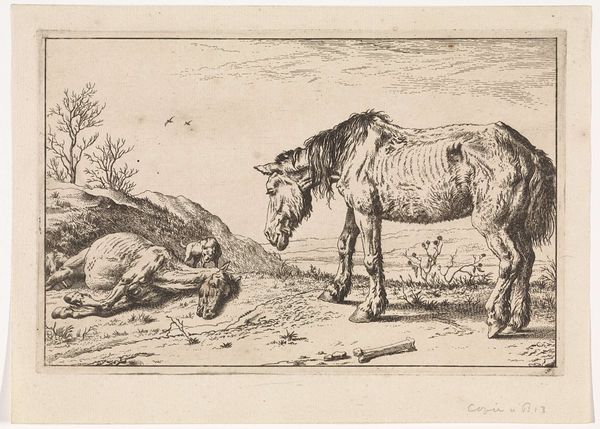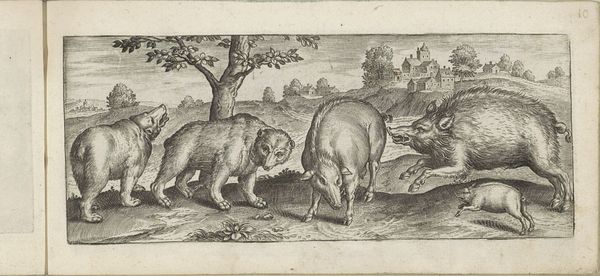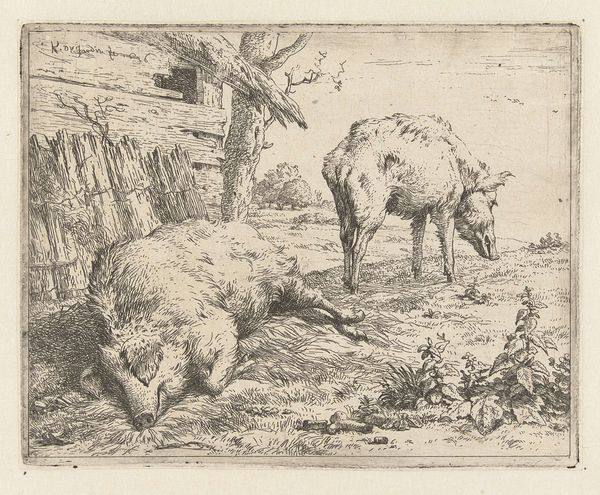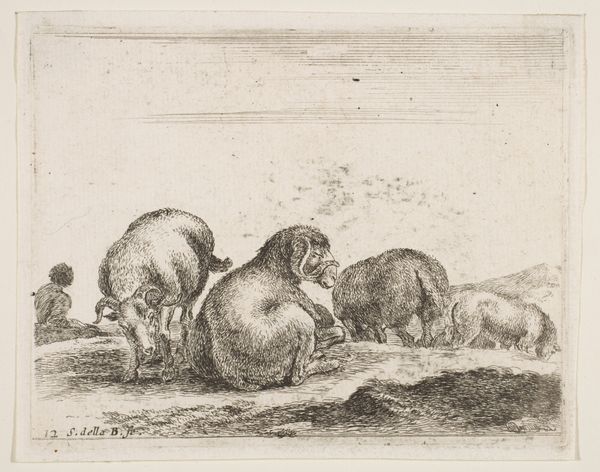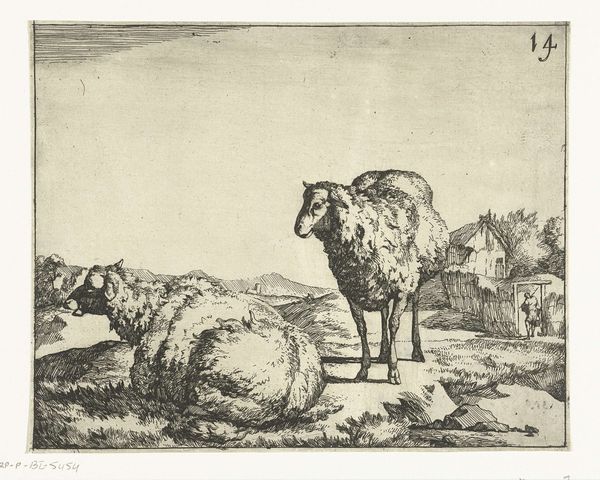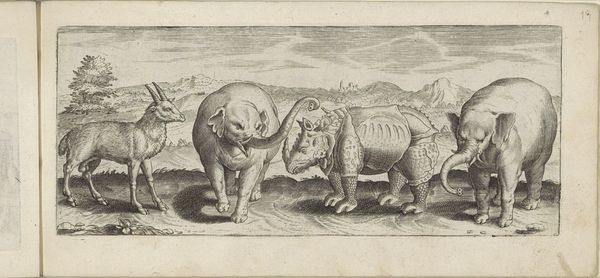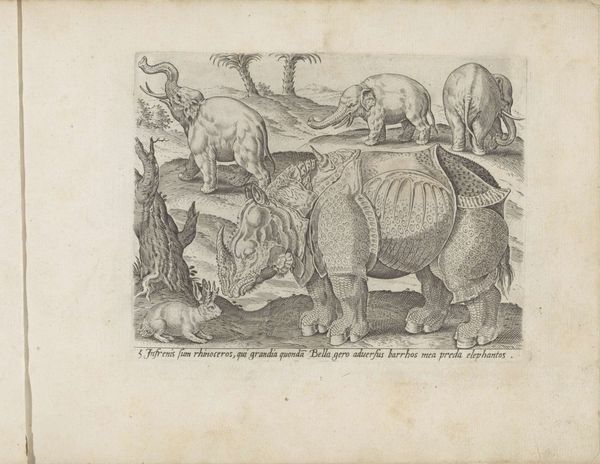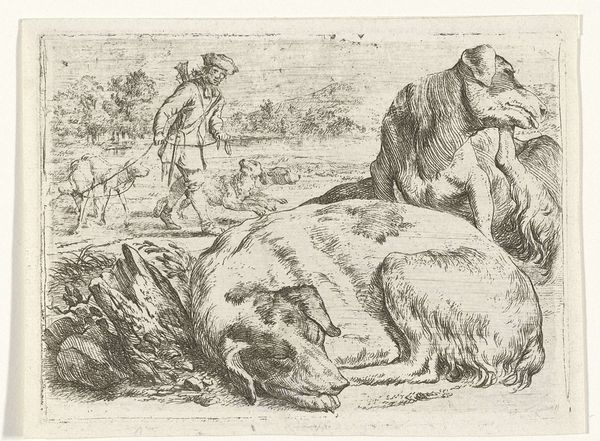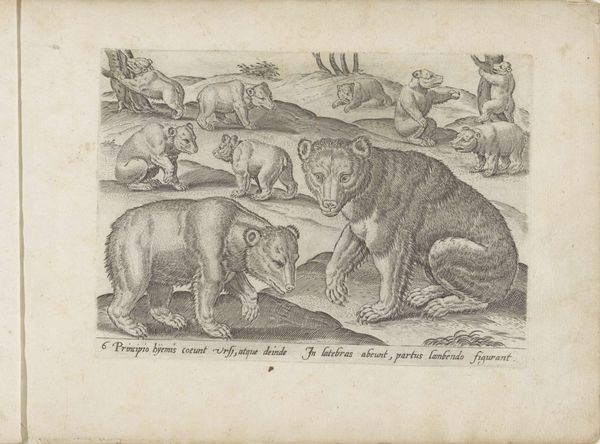
drawing, print, paper, ink, engraving
#
drawing
#
animal
# print
#
pen sketch
#
pencil sketch
#
landscape
#
paper
#
11_renaissance
#
ink
#
genre-painting
#
northern-renaissance
#
engraving
#
realism
Dimensions: height 145 mm, width 220 mm
Copyright: Rijks Museum: Open Domain
Editor: This engraving, "Dieren van Java," which translates to "Animals of Java," made between 1597 and 1646 by an anonymous artist, showcases various animals. The most striking aspect is how the elephant and rhinoceros are rendered; they feel somewhat...imagined. How do you read this depiction in light of the time it was made? Curator: It's true; they do seem like approximations. Remember, this print dates to a period of expanding European exploration and colonialism. These images often weren't based on direct observation, but rather on second-hand accounts and earlier artistic conventions. The "accuracy" wasn’t the point; it served more as a display of worldly knowledge and, perhaps more insidiously, as a demonstration of European dominance over the natural world. Do you notice anything about the setting they are put in? Editor: The animals seem staged within a generic landscape. Almost like they were all brought together for this portrait despite the geographical issues. I guess this portrayal makes it about Europe's grasp and classifying exotic fauna? Curator: Precisely. These weren't just innocent depictions; they were instruments in constructing a worldview. Prints like this circulated widely, shaping perceptions of foreign lands and their inhabitants. It perpetuated a sense of European control and authority through visual representation. They catered to curiosity, but also reinforced power dynamics. Does it change how you look at the image now? Editor: Absolutely. I see it as less of a neutral study and more of a… political statement almost? Thanks for illuminating the image in this different cultural context! Curator: My pleasure. Analyzing images within their historical and social context reveals the intricate stories behind their creation and reception. And that understanding is critical.
Comments
No comments
Be the first to comment and join the conversation on the ultimate creative platform.
